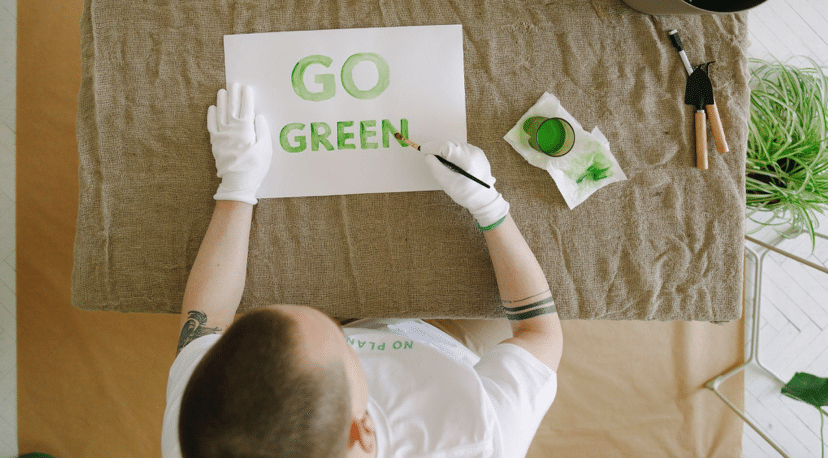Global sustainability is a high priority for nearly 60 percent of American consumers. People are more interested in eco-friendly products and practices, and big and small businesses alike have noticed.
With that in mind, it could be good for your business to center a PR campaign around your company’s environmental initiatives or sustainability measures. However, there’s a fine line between authentically advertising sustainability and greenwashing.
Chances are, you’ve heard of greenwashing practices, but so many still don’t fully understand the concept or why it could do more harm than good to your business’ image.
With that in mind, let’s take a closer look at greenwashing, why it should be avoided, and how your brand can establish a greener tone in your messaging without engaging in unethical practices.
Image Source: Pexels
Corporate social responsibility
Because individuals have become more responsible in their sustainability efforts, it should come as no surprise that they want the businesses they support to do the same. Corporate Social Responsibility (CSR) is a voluntary commitment to create strategies that support and protect the environment.
When your business makes that commitment, however, follow-through is what’s important.
That’s why greenwashing can be so tempting from a PR perspective. It’s a marketing technique that adds a “green sheen” to your messaging, focusing on neutral colors for your packaging and advertising or using terms like:
- Non-toxic
- Cruelty-free
- Natural
- Organic
It’s not uncommon for businesses who practice greenwashing to change their company logo or slogan, giving their consumers the perception of legitimacy. However, this goes against CSR. When your business makes a commitment to sustainability, you need to be able to back it up. While greenwashing can work for a while, today’s sustainable-savvy consumers are likely to see through packaging and logos very quickly.
Connect with your customers
One of the best ways to prove to your target audience that your sustainable efforts are genuine is to build trust. Nowadays, consumers want to feel more connected with the brands they support. Many view brands as relationships. It’s no longer “good enough” to throw advertisements at your target audience and expect them to flock to your business.
Instead, building trust over time and humanizing your brand will make it more likely for your audience to keep coming back.
When it comes to your sustainability practices, the best thing you can do is to find a way to incorporate authenticity into your PR campaigns. Your goal should be to build emotional trust and provide social proof to your consumers.
If you know you have an eco-friendly customer base, show how you’ve been giving back. Talk about your brand’s initiatives to make the world a greener place. Maybe you’ve updated your supply chain practices to reduce carbon emissions. Maybe you’ve changed your packaging to something recyclable or biodegradable.
Get on social media, answer questions, create behind-the-scenes videos, and humanize the way your brand is making a difference. By getting as “real” as possible with your efforts, you’ll avoid the pitfalls of greenwashing, build stronger relationships, and can pat yourself on the back for practicing what you preach.
Long-term marketing of your sustainability efforts
It’s not uncommon for PR professionals to think in terms of campaigns. While running a green campaign about any new efforts you’re putting forth is great, it shouldn’t be your long-term approach to sustainability.
Instead, your genuine tone and dedication to a more sustainable business should be something permanent.
Show your target audience what you’re doing behind the scenes on a regular basis. Make your sustainability efforts part of your mission, and consider centering your business around it if you’re trying to improve your image or target a new generation.
Some of the best ways to do that include updating your website regularly with facts and figures about what your green efforts have done. How much has your carbon footprint reduced over the last five years? How many carbon emissions have you offset? What percentage of your business is running on solar power?
Those are just a few ideas that can help you “back up” your claims.
You can also keep your audience in the know regarding what you plan to do in the future. For example, your business might qualify for a green business grant that you can use to renovate and maintain your current location to make it more sustainable. You can also apply for tax credits for any green initiatives you’ve already taken, including things like:
- Installing solar panels
- Using wind energy
- Upgrading to energy-efficient appliances
- Going paperless
These are all things you can update consumers about on a regular basis. You can even run campaigns whenever you’re able to do something “bigger” for the planet. However, by maintaining a consistent commitment to sustainability, you’ll build a greater sense of trust, and your efforts won’t seem as “gimmicky.”
Unfortunately, greenwashing isn’t likely to go away any time soon. However, consumers are becoming more aware of it, and keener when it comes to what to look for. Make sure your brand, your voice, and your campaigns don’t fall into these greenwashing traps.




